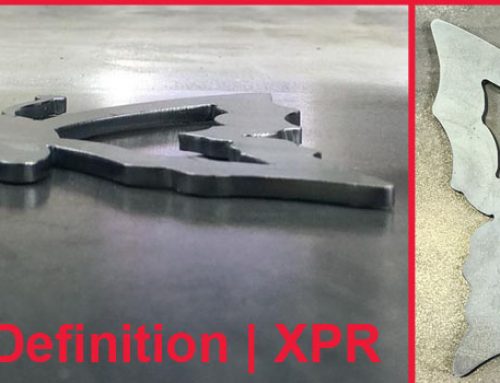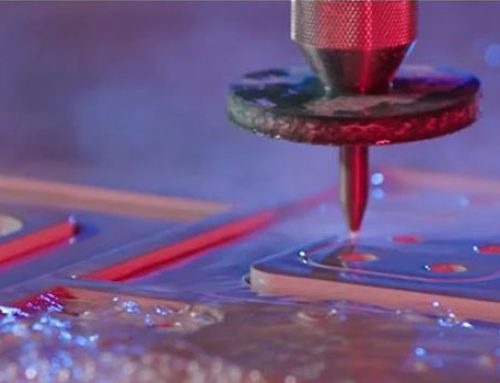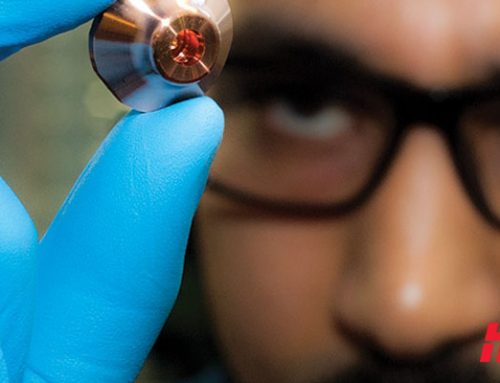Fume extraction welding guns remove harmful welding fumes efficiently
Gas metal arc welding (GMAW) is a popular welding method, but the process poses risks for the welder. Welders protect themselves by wearing safety gear to protect the body and eyes from burns, electrical shock, bright light and ultraviolet radiation. Protection from welding fumes is often left out of this equation. Weld fumes contain minute particles of metallic oxides, silicates and fluorides, usually less than 1.0 µm in size and can be harmful if inhaled.
It is possible to select welding processes and consumables that generate lower levels of welding fumes or lower levels of key harmful fume components such as manganese and chromium. For instance, using a gas mixture with a higher percentage of argon, or switching from ER70S-6 to ER70S-3, which contains less manganese. Some welding power sources also utilize waveforms that reduce fume generation.
Occupational Health and Safety organizations recommend that the removal of these fumes begins at the origin of the weld, achievable with a fume extraction welding torch. Fume extraction welding guns are efficient in removing harmful welding fumes directly at the source without affecting the protective gas shield. With these guns, a vacuum is integrated at the front nozzle and suctions the fumes through a hose to a filtration system to catch harmful particles.
There are many benefits to smoke extraction MIG torches. The welder’s breathing zone is protected. Torches also clean the air for other workers. Capturing smoke at the source is economical and efficient as the process takes place where the highest concentration of particles is found. As smoke extraction is built into the tool, the welder does not have to worry about moving an arm into the proper position; between 6-12 in. (152 305 mm) to of the weld. It also requires less vacuum volume, typically 80-100 CFM compared to 600-900 CFM for large smoke extraction arms. When air is evacuated outside, you also have to consider extra heating or air conditioning costs.
Efficient smoke extraction
It is important to understand the factors behind fume extraction. The speed of the welding smoke that goes up is proportional to the power used to perform the weld; the higher the parameters, the faster the smoke will go up. To catch the smoke, you need to be positioned properly and your vacuumed air must be faster than the speed of the smoke going up.
• The torch: Fume extraction torches are usually heavier than standard GMAW torches. Choose the most ergonomic and the lightest weight guns possible. Make sure the nozzle and fume shroud are small enough to access your welds. For higher amperage applications, consider using water-cooled guns to keep the weight down. This will ensure welders’ comfort, reduce fatigue and optimize handling.
• Positioning: Position the torch as vertical as possible to the weld. Flat welds require a close to 90° position and corner welds require between 45° and 60°. Vertical welds are harder to control and need more vacuum; sometimes it requires the use of a cone in front of the torch. Consider the design of the parts to weld in flat position as much as possible.
• Shielding Gas: Set welding shielding gas accurately to cover the weld but not in excess, as this will push the smoke away from the efficient suction zone. It is also critical to control the initial gas surge that can be up to three times the set flow for a few seconds, especially when the flowmeter is far from the feeder. A portable flowmeter should be used to check the gas flow with the vacuum on. Ensure you keep the front end of the gun free of debris and weld spatter. Ceramic anti-spatter spray works well applied directly on the front end consumables and fume shroud.
• Vacuum: Smoke extraction torches need a HVAC type vacuum. The latest models perform properly without causing porosity or weld quality issues at up to 100 CFM. This requires the vacuum system to provide such volume at operating pressure of 85-90 in H2O (-22kPa).
• Training: Welders need to use recommended best practices and understand why some aspects are extremely critical in smoke extraction. The proper torch position is easy to implement and the use of video sessions is helpful to see their own position in relation to the smoke extraction performance. Basic maintenance and cleaning of the torch should be part of the initial training.
Created: September 5, 2015 | by Etienne Blouin & Jim Dileo | http://shopmetaltech.com/






